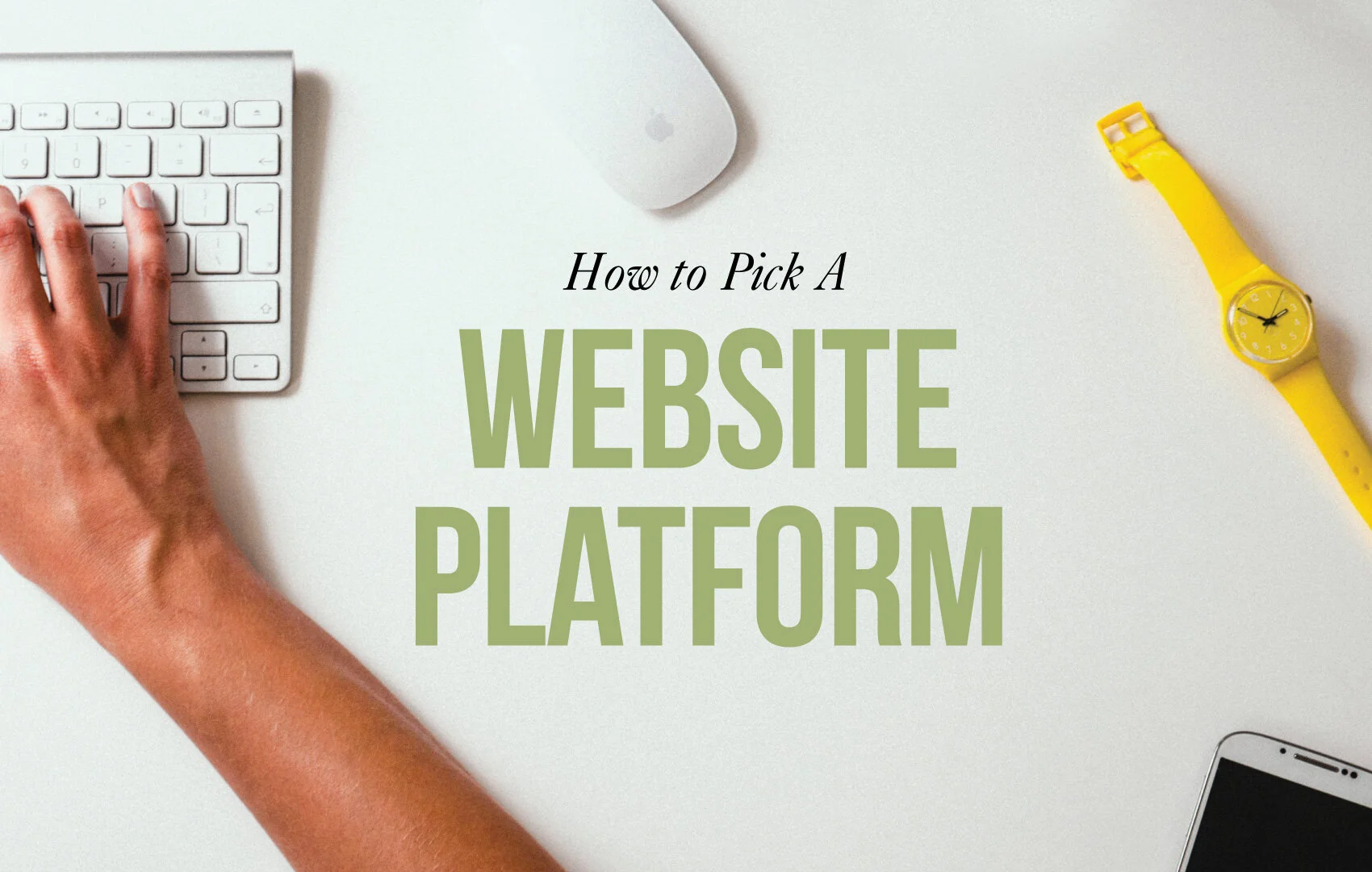How to Pick A Website Platform
There are a ton of website platforms out there. The most known being Wordpress, Squarespace, Wix and Shopify. If you've never built or launched a website before, knowing where to start can be really hard.
Hopefully you’ve taken the time to figure out your website objective and get a basic understanding of your website requirements. If you’ve done this, you’ll be off to a good start.
There are basically three steps to choosing a platform:
Research
Find out what’s out there. Ask friends, post in your social media channels, do a google search. You can actually get a lot of good information on YouTube. Some people make entire careers out of producing their own how-to and tutorial videos for certain platforms.
Watching the videos will give you a preview of how the website builder is set-up. It may look complicated to use or amazingly simple. Checking it out via video will let you do this without having to set up a trial account.
2. Review the features list against your requirements
If you don’t know what I mean by requirements, read this post first.
Most platforms will let you know what they can do on their websites or sales pages in a ‘Features’ section. Sometimes these sections can be frustratingly high-level though. For example, if you need e-commerce functionality but you want to embed videos in the product descriptions, most feature listings won’t get this detailed. You’ll need to move on to the next step...
3. Take a platform for a test-run
Most hosted platforms will let you start a free trial-account. Once you’ve got it set-up, see if the platform can do what you want it to do. Take your most important requirement and try to set it up. Using the example in step 2, you’d set up a dummy product listing and see if you could embed a video into it. If you can, and it was easy to do, great! You’ve got a finalist, if not, next!
There are pros and cons to many of the web builders out there. I know I’m a web designer, so I have a vested interest in saying this, but I find most of them are not that intuitive for people that don’t have a background in design or aren’t pretty comfortable with technology.
Many of my clients have attempted to build a site on their own; gotten frustrated and stuck, and ended up hiring me. I see this a lot.
Here’s what I tell people when they ask me what platform they should use:
As a general rule, if you have a lot of dynamic content, meaning you’ll be updating your website a lot, for example with a blog, use Wordpress. If you want a somewhat easy to manage brochure/showcase website, that you won’t be updating that often or you don’t have to bulk edit a lot of content, use Squarespace. If you are doing pure e-commerce with a large catalog of products, use Shopify.
I’ve designed a Wix site and have looked at if for clients. I find the user interface really cluttered. It let’s you do so many things that you can really make a mess. Webflow is intriguing. It seems it’s really a platform created for designers who have been raised on Adobe Products to create websites for clients, rather than an offering for non-designers/techies to create their own site.
Here’s what people in my network said when I asked them about it:
“I’ve used Wordpress, Squarespace and Wix. I really tried to love Wordpress, but it was just too much for me to learn, plus with all the uploading and updating of the widgets, etc. So in the end, I chose Squarespace, mostly because I loved the templates. I used Wix in the past but found it got clunky when you wanted to make changes to the site.”
- REAL ESTATE BROKER
“I took Squarespace for convenience reasons. Easy to start with and comes with many features.”
- CONSULTANT
“Several years ago (2017 -ish), I had to do a website and chose Wix. It offered an open template, which I liked, and was said to be intuitive and resposive. It is an intuitive program, but (at the time) it didn't perform well across platform/browser. I now use Wordpress, which is good, but there is a bit of a learning curve with every theme. Occasionally I find the Wordpress "logic" a bit convoluted. Being thrown into that world, can be disorienting because everyone starts using complex terminology as if it were obvious. Even last week I TOTALLY collapsed a site because I didn't have a nuanced understanding of PHP & MySQL requirements before loading a plugin. A video showing me basic terminology and how the parts relate would have been key: PHP version, plugin, Elementor etc.”
- ONLINE LANGUAGE INSTRUCTOR
So there you have it. Picking the right platform from the beginning can save you a lot of wasted time, tears, money and frustration. It’s important to get it right.
Need help with this decision? Book an hour long digital strategy session with me and we’ll figure it out together.

